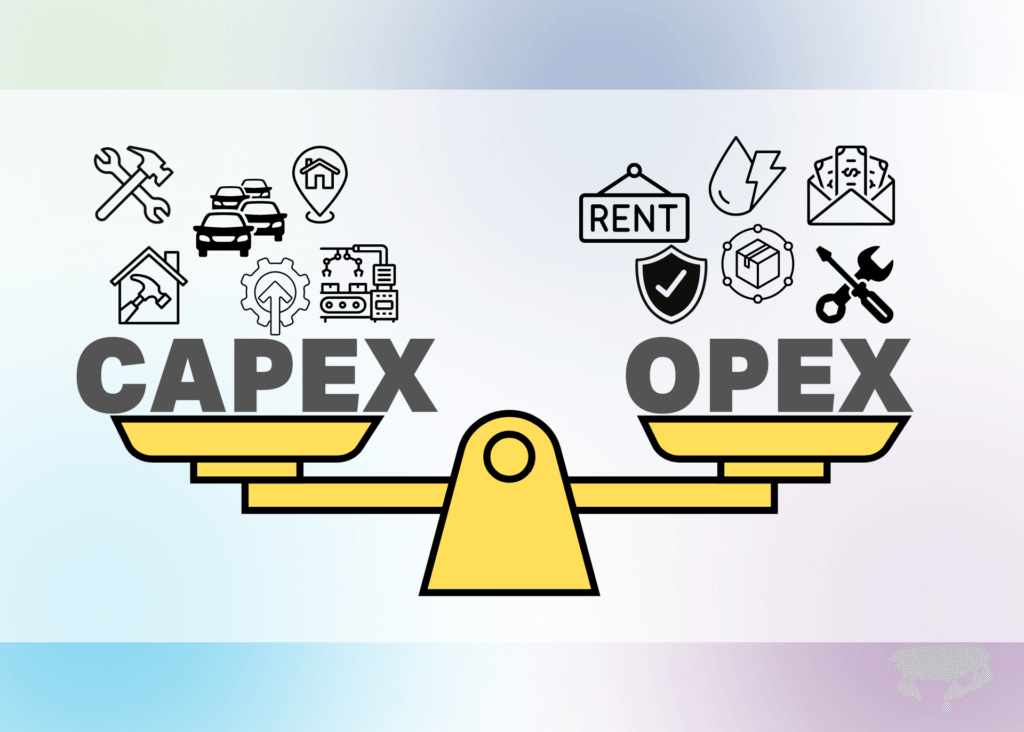Maintenance key performance indicators (KPIs) assess how well a company achieves its maintenance objectives, like cutting expenses or minimizing downtime. They serve as standards for your organization and illustrate where your team currently stands, how much further you still have to travel, and the steps you must take to get there.
For instance, the final objective of your firm can be to achieve a particular level of cost reduction. Maintenance can affect this goal through department spending and waste in manufacturing. The act of assigning numbers to these aspects transforms them into KPIs.
Although every facility, and especially data centers, will have their own goals and standards, some of the most typical maintenance KPIs center on a few essential components, including the following:
- Efficiency
- The costs and expenditures
- Security and regulatory compliance
- The performance of the asset
- Downtime
- Work order management
- Control of stock and supplies
Converting Data to Maintenance Performance
As we now understand, data about maintenance performance converted to tangible information is business intelligence. If a company has this, it gives them an advantage over its competitors. Yet if such intelligence is gathering dust in a database or on a computer, it serves no useful use. Maintenance stakeholders, decision-makers, and key persons need digital dashboards and reports to quickly see maintenance performance and key indicators.
Regarding data center management, it’s important to track KPIs to help measure success and identify gaps in performance and inefficiencies. Displaying the right KPI dashboards using facility management software can make it easier to see and address these gaps quickly, making asset management efforts more efficient and cost-effective.
Some important benchmark KPIs in data center and facility management include reactive vs. planned and preventative maintenance, asset performance, downtime, site assessment and inspection progress, and cost vs. budget. Dashboards highlighting these KPIs and key metrics can significantly save time, effort, and frustration.
There are five key dashboards that facility managers should consider using to do more with their data and make better decisions.
- Asset Registry Dashboard
- Work Orders and Predictive Maintenance Dashboard
- Reporting of Global Incidents Dashboard
- Site Assessments Dashboard
- Risks and Opportunities Dashboard
Using these dashboards, facility managers gain real-time insights into facility performance, helping better make data-driven decisions.
Work Orders and Predictive Maintenance
With predictive maintenance, you can avoid equipment breakdowns, cut maintenance costs, and extend asset lifespan.

A dashboard for work orders and predictive maintenance enhances work order management. It allows you to track and monitor planned and unplanned maintenance in real-time. The dashboard provides you with valuable insights over a time frame into various aspects of your business, including:
- Issues
- Incidents
- Mode of failure
- Manufacturer and provider reliability
- Number of work orders and service requests completed
- Average time to complete a work order or service request
You can use this information to determine the amount of reactive maintenance work you have. Based on this, you can develop preventive workflows to improve the efficiency of your upkeep processes and lower costs. By leveraging a facility management system that digitizes your approval process and automates work order creation based on predetermined assessment response criteria, you put your data to work for you and proactively stay ahead of any issues.
What are predictive KPIs?
Predictive KPIs have been developed to improve maintenance operations further. They use data to show how people and things work, helping us understand how well things are being done.
Predictive KPIs help identify strengths, weaknesses, and areas needing improvement. They allow maintenance operations to anticipate and prevent equipment failures, instead of reacting to them after they occur.
Predictive maintenance offers a more proactive approach to maintenance, resulting in cost savings, reduced downtime, and improved overall performance. By incorporating predictive KPIs into maintenance operations, maintenance teams can stay ahead of their maintenance schedules and unlock the power of KPIs.
What are some common maintenance KPIs?
When it comes to maintenance, everything revolves around both people and machines. To achieve success in maintenance, optimizing the performance of both people and assets is essential. Because of this, the maintenance metrics are utilized to track progress on how both people and equipment do their jobs.
Mean Time Between Failures (MTBF)
Mean Time Between Failures (MTBF) is a valuable KPI that leaders can use to allocate capital and increase efficiency in operations. This metric is calculated as the production time divided by the number of failures. The higher the MTBF, the longer a system is likely to work before failing.
Preventative maintenance (PM) Compliance
Preventative maintenance (PM) is essential to keep assets in optimal working condition, reduce unplanned downtime, increase operational efficiency, and decrease maintenance expenses associated with unplanned repairs. A PM schedule outlines when maintenance activities are to be performed on a given piece of equipment. There are two primary metrics for PM schedules: time-based and usage-based.
PM Compliance measures how many scheduled PM tasks technicians completed within a specific timeframe. Fixed and floating PM schedules are the two primary options when making a preventative maintenance schedule. Creating a preventative maintenance schedule involves coordinating materials, equipment, and timeframes for completing tasks, and it is primarily the responsibility of dedicated maintenance schedulers, maintenance supervisors, and maintenance planners.
Maintenance Backlog and Scheduled Maintenance Critical Percent (SMCP)
Scheduled maintenance is a simple but valuable practice ensuring equipment continues functioning as designed, reduces downtime, and maintains maximum value. It involves deciding when maintenance tasks will be completed and by whom. Factory scheduled maintenance is a form of time-based maintenance focusing on checking for signs of problems and improving performance. SMCP (Scheduled maintenance critical percent) is a tool companies use to prioritize overdue maintenance tasks.
Calculating SMCP improves maintenance scheduling, reduces cases of reactive maintenance, and makes audits easier. It helps to reduce unnecessary downtime and maintenance costs. Clear and timely communication between facilities managers, maintenance technicians, and key stakeholders is crucial to a well-run program.
Mean Time to Repair (MTTR)
Mean Time to Repair (MTTR) is the average time maintenance teams spend diagnosing, repairing, and recovering failed equipment.
Organizations can use MTTR as a benchmark for improving asset efficiency, reducing downtime, and minimizing costs. Conducting an MTTR analysis enables organizations to evaluate the quality and effectiveness of their maintenance strategies, processes, and practices.
MTTR can predict the impact of equipment failure on an organization’s bottom line and help leaders decide whether to repair or replace aging assets. Organizations can improve MTTR by understanding the four stages of MTTR: problem identification, diagnosis, repair, and verification that the asset is operational again. The primary goal is to reduce the time spent in each stage.
Planned Maintenance Percentage (PMP)
Planned maintenance is a maintenance approach focused on minimizing equipment downtime and returning to uptime immediately after a breakdown. Planned maintenance percentage (PMP) represents the amount of maintenance time used for scheduled maintenance activities, calculated against the cumulative number of maintenance hours for a given time period.
Planned maintenance involves knowing the spare parts, tools, services, and maintenance tasks needed to solve a problem. Preventative and planned unscheduled maintenance are the two categories of planned maintenance.
Planned maintenance has several benefits, including decreasing downtime, increasing asset lifespan, reducing maintenance costs, improving workplace safety, and enhancing company culture. However, inefficient preventative maintenance programs can increase maintenance costs over the long run.
Selecting the appropriate metrics for maintenance
To begin with, and most importantly, metrics serve as a means of communication; they aim to convey a message. Your operation will not benefit greatly from sending that message if it seems like a bunch of random gibberish. Because of this, before you even get started tracking the data, you need to identify the maintenance metrics that you are going to measure with extreme caution.
Choose metrics that are pertinent to your firm’s objectives, are easily comprehensible to both you and your team, and can be implemented to change how you go about your daily business. Every metric ought to have some kind of connection to a certain maintenance KPI. When defining measurements, be sure to follow these steps:
- Which consequence do you hope to achieve?
- How can you monitor your development while also having an influence on the final result?
- Who is accountable for the outcome of the company’s operations?
Make it a point to seek the opinions of a wide range of stakeholders, such as technicians, operators, and managers, to better understand which business processes need to be measured and why.
How to measure metrics for maintenance
After we determine which metrics to measure, we need to learn how to monitor them. Tools, procedures, and people are the three components that make up the measured maintenance metrics.
For decisions regarding maintenance to be effective and to affect change in infrastructure management, they must be driven by data. Access to the dashboards and reporting functionalities of an EAM or CMMS is necessary for all users in decision-making, whether they are mechanical technicians attempting to influence planned maintenance and unscheduled downtime or chief executive officers attempting to balance operational costs.
They can impact key performance indicators but they must be able to quickly and easily see trends and changes in performance at the press of a button. And this is where cutting-edge data center management software, such as the technological solutions offered by MCIM24X7 is invaluable.
Make it a point to seek the opinions of a wide range of stakeholders, such as technicians, operators, and managers, to better understand which business processes need to be measured and why.
How to measure metrics for maintenance
After determining which metrics should be measured, the next step is to learn how to monitor them. Tools, procedures, and people are the three components that make up the measured maintenance metrics.
For decisions regarding maintenance to be effective and to affect change in infrastructure management, they must be driven by data. Access to the dashboards and reporting functionalities of an EAM or CMMS is necessary for all users in decision-making, whether they are mechanical technicians attempting to influence planned maintenance and unscheduled downtime or chief executive officers attempting to balance operational costs.
They can impact key performance indicators but they must be able to quickly and easily see trends and changes in performance at the press of a button. And this is where cutting-edge data center management software, such as the technological solutions offered by MCIM24X7 is invaluable.



